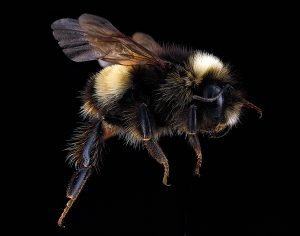29
Nov
Health Canada Proposes to Ban Most Uses of the Toxic Insecticide Imidacloprid
(Beyond Pesticides, November 29, 2016) Last week, Health Canada announced its intent to cancel nearly all uses of the neonicotinoid insecticide imidacloprid after determining that the chemical poses unacceptable risks to the environment. Although imidacloprid and other pesticides in the neonicotinoid chemical class are notorious for their harmful impact to pollinators, Health Canada’s decision to eliminate most uses of the chemical is based primarily on the danger it poses to aquatic insects. Environmental groups throughout the world are praising the proposal, but cautioning against the long, three to five year phase out period proposed by the agency. There is concern that the phase out will permit continued environmental damage, and provide time for other toxic insecticides with similar systemic properties to replace imidacloprid. Advocates are urging U.S. Environmental Protection Agency (EPA) to complete its full assessment of imidacloprid and follow Canada’s lead in eliminating this toxic chemical.
Imidacloprid breaks down slowly in the environment and has a strong propensity to move through soil and into ground and surface water. Health Canada indicates that water quality monitoring data frequently detects the chemical in water ways at levels that poses unacceptable risks to aquatic insects. The agency was unable to attribute the source of imidacloprid in aquatic environments to a specific agricultural use site, indicating that, despite current label mitigation measures, elevated levels are likely to be found in many agricultural areas where imidacloprid is often used. Health Canada further indicated that its monitoring data are likely underestimating actual exposure. Based on this information, the agency concluded “that the continued use of imidacloprid in agricultural areas is not sustainable.” No mitigation measures the agency could enact would be suitable to reduce risk, resulting in Health Canada’s proposal to phase out use of the chemical.
ways at levels that poses unacceptable risks to aquatic insects. The agency was unable to attribute the source of imidacloprid in aquatic environments to a specific agricultural use site, indicating that, despite current label mitigation measures, elevated levels are likely to be found in many agricultural areas where imidacloprid is often used. Health Canada further indicated that its monitoring data are likely underestimating actual exposure. Based on this information, the agency concluded “that the continued use of imidacloprid in agricultural areas is not sustainable.” No mitigation measures the agency could enact would be suitable to reduce risk, resulting in Health Canada’s proposal to phase out use of the chemical.
Health Canada is proposing to eliminate the following uses of imidacloprid:
- trees (except when applied as a tree trunk injection)
- greenhouse uses
- outdoor agricultural uses (including ornamentals)
- commercial seed treatment uses
- turf (such as lawns, golf courses, and sod farms)
- residential lawns
However, the agency is leaving in place certain uses for the chemical, including applications in and around homes and buildings, use as a tree trunk injection, and flea, tick, and lice collars for cats and dogs. It is also important to note that this current proposal is only specific to imidacloprid, and does not address the use of other neonicotinoids or systemic chemicals, notably the other two most widely used of the class, clothianidin and thiomethoxam. Health Canada is addressing those chemicals in separate “special reviews.”
Health Canada’s review also does not incorporate the impact imidacloprid poses to honey bees. Although EPA has yet to release as broad a health and environmental review as Health Canada, it did release an assessment of imidacloprid’s risk to honey bees earlier this year. The agency’s work confirms that the chemical is highly toxic to honey bees, and that bees can be exposed to harmful residues of the chemical in crops where pollinators forage, including citrus, cotton, and other crops.
“This timeline is unnecessarily long,” said the organization Environmental Defense in a statement. “The federal government must accelerate the phase-out to prevent further harm to aquatic wildlife and pollinators.”
Health Canada’s action follow local and provincial moves to restrict toxic neonicotinoid use. The cities of Montreal and Vancouver have banned their application, and the provinces of Quebec and Ontario have instituted restrictions on their use in agriculture. In the U.S., although there has been significant local action, honey bees are still in dire straits, with elevated losses still continuing over a decade into this crisis. This past year (2015-2016), beekeepers lost 28.1% of their colonies over the winter, and a total of 44% of their colonies throughout the year. While EPA indicates that its broader review of imidacloprid and other neonicotinoids will be completed soon, it could take until 2018 to finalize any action.
For more on what you can do to help pollinators, visit our Bee Protective program page. Beyond Pesticides encourages concerned individuals to become active in pesticide reform efforts in their community, in order to help build pressure to restrict these chemicals at the federal level. If you’re interested in passing common-sense laws to protect pollinators, contact Beyond Pesticides at 202-543-5450 or at [email protected].
Source: Health Canada
All unattributed positions and opinions in this piece are those of Beyond Pesticides.










